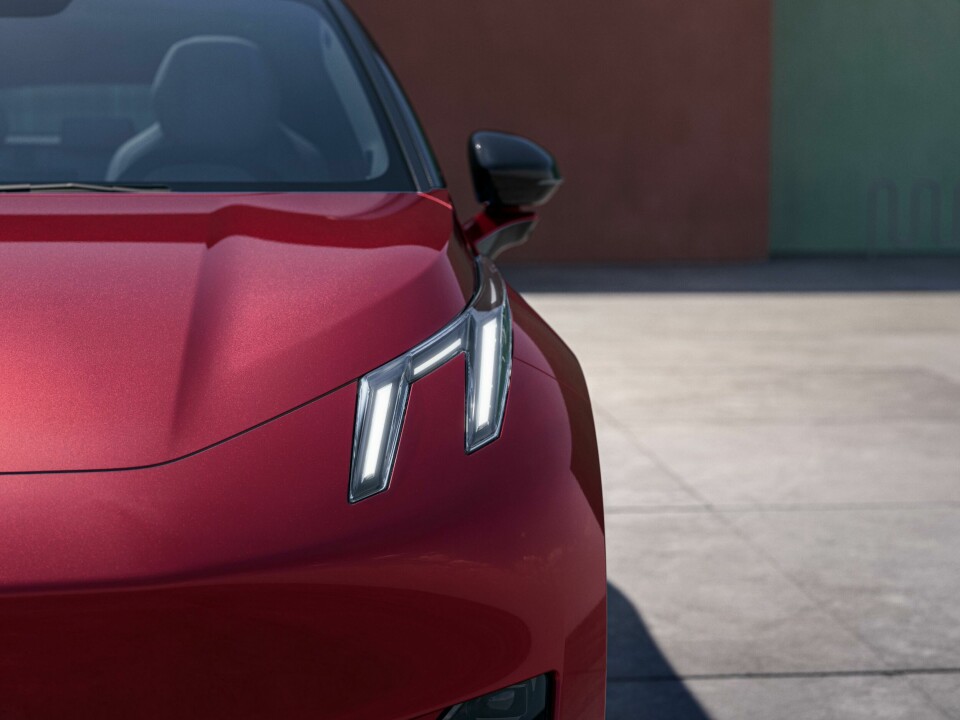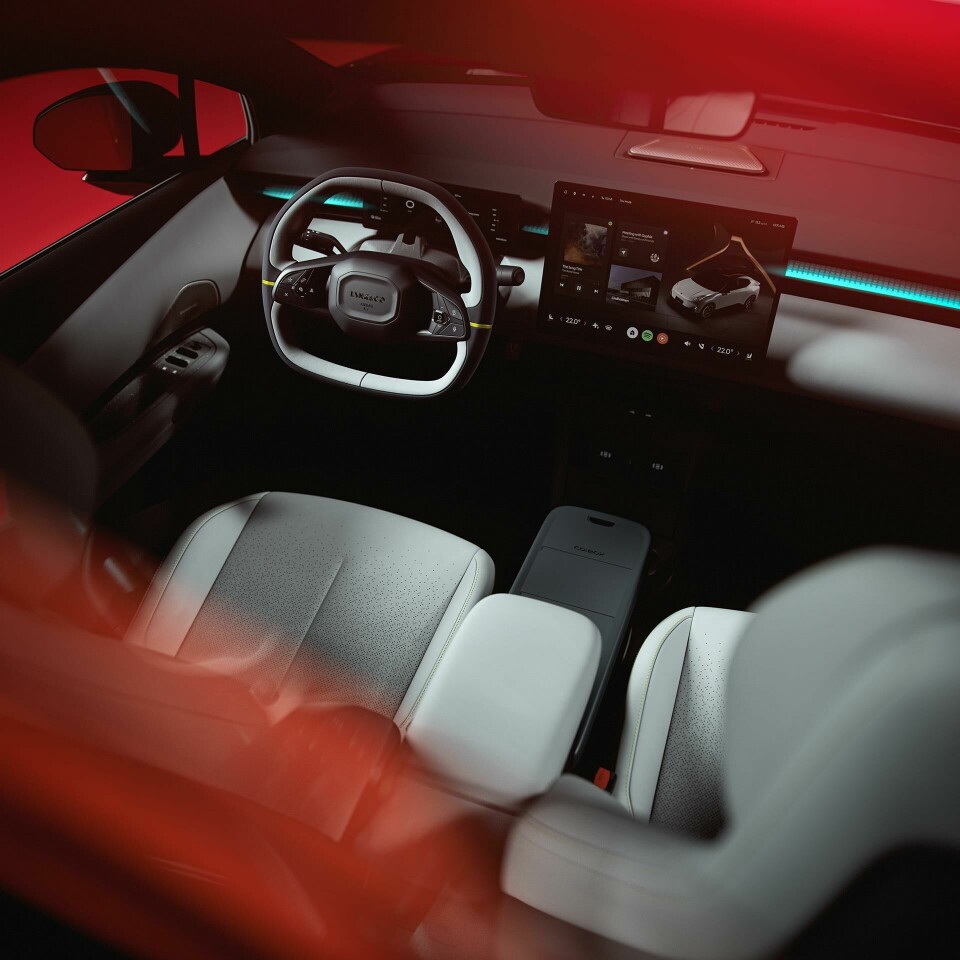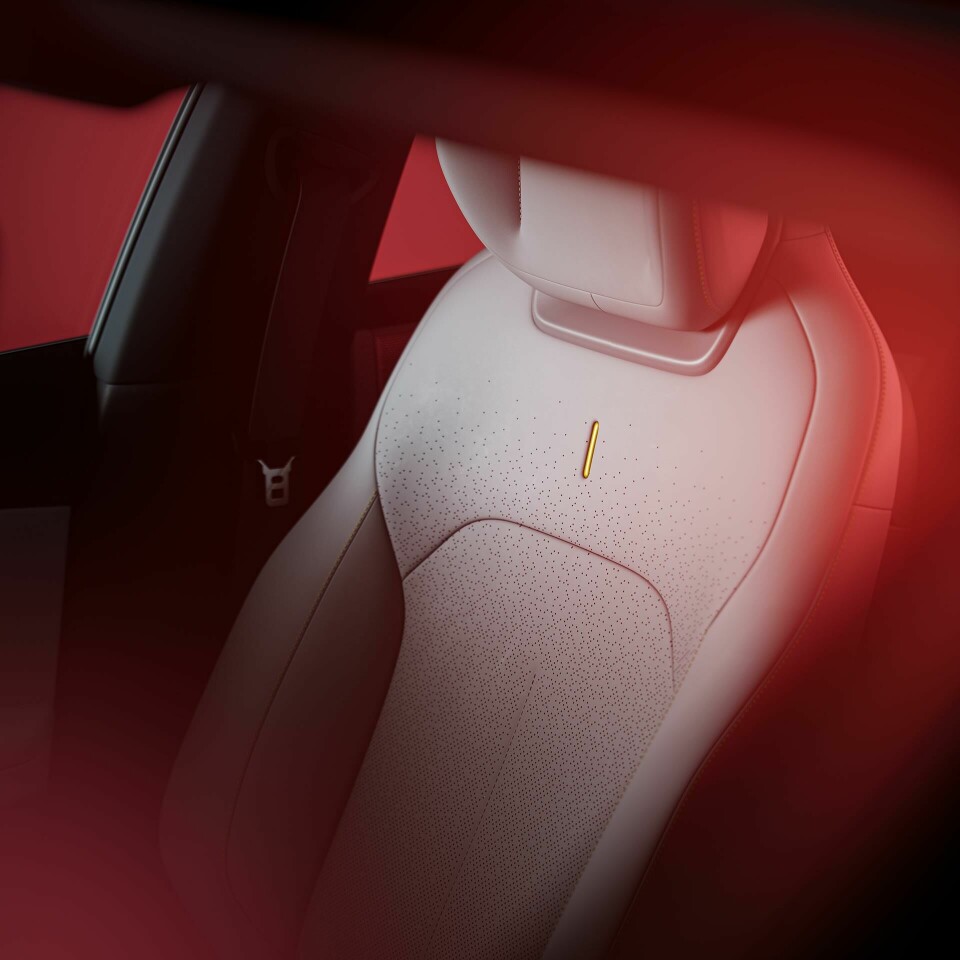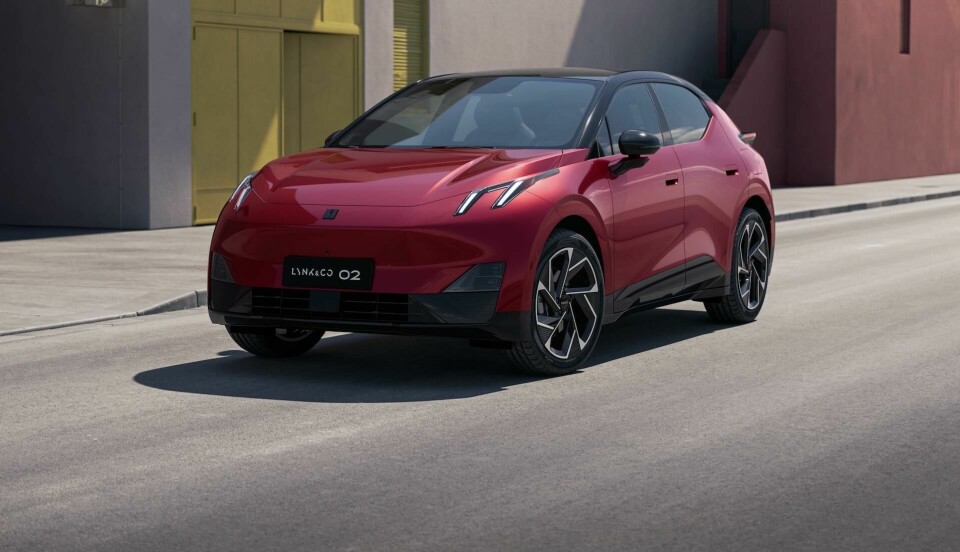
“Aero-dramatic”: Lynk & Co's design team discuss the 02
At a suitably quirky launch event in Milan – dancers, saxophones and laser shows all featured – Lynk & Co showed off its 02 and Car Design News spoke to the design team
Lynk & Co is a quirky brand. Take a look at the interior design of its members’ clubs: lamp posts bent at 90 degree angles, accidentally Wes Anderson hues, fake plastic trees, it is all wilfully offbeat. So it went with the launch of the new all-electric SUV/crossover 02, which was unveiled to a soundtrack of electric violins and cavorting youth. It was great fun, but proved almost a counterpoint to the muscular, but far from extravagant stylings of the car.
“We have evolved since our first car on the European market. This design adds more calm and refined elements to our toolbox without losing any of the personality the brand is known for,” says design director Stefan Rosen.
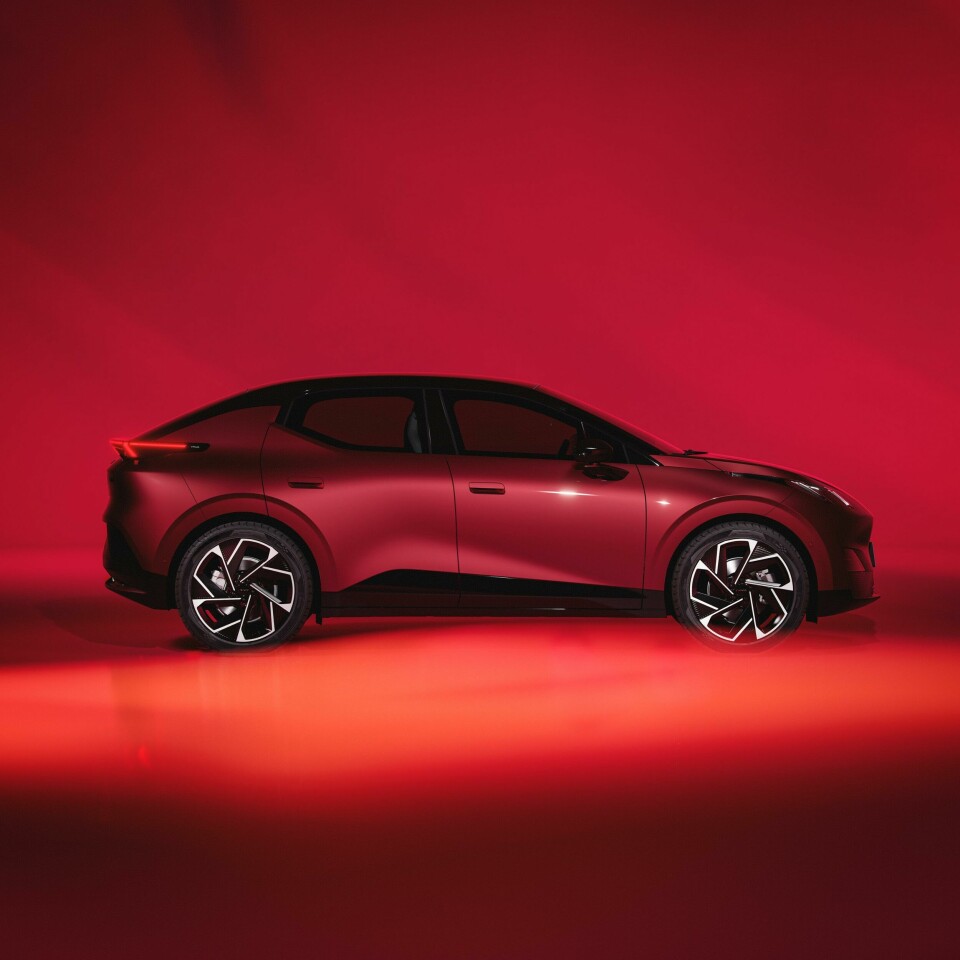
“Aero-dramatic” was the portmanteau Rosen applied to the work of his team but, if anything, the form language is drama free: there are no competing crease lines, or overwrought detailing. The drama is of a quieter sort, strong massing on the fenders thanks to a sculpted hood with a steepish rake from cowl to front face. “It is sleek and fierce and you will not find any blandness here. We have turned aerodynamic targets into design features.”
The front face itself is pure EV with no grille, which means the defining element when viewed head on is the daytime running lights, which are quickly becoming a recognisable Lynk & Co signature. On the 02, these are better resolved than that of their predecessors where the lights protruded from the hood. “They are not perfectly flush,” says Rosen. “They still have a three-dimensionality to them.
The most important thing is the face – we should see that family resemblance
“And when you look at the rear we also have those double lines,” he adds. “We want Lynk & Co to be identifiable from a long way away.” In profile, the proportions feel solid with strong haunches terminating seemingly prematurely in a vertical rear end. “We have a calm overall expression with intricate, technical detailing,” explains Olivier Denamur, exterior design lead. For instance, a black square in the centre of the upper mask houses radar while auxiliary sensors are located in the lower mask.
As with the front face, tech is hidden within the gloss black rear mask with minimal fuss. Centre stage is the aerodynamic spoiler that integrates the simple light signature. The glasshouse features an expansive glazed roof that helps the design team’s objective of maxing out the spacious interior feel. “The two layer instrument panel has a concave design, giving the front passengers more space. The top layer is like an aerodynamic stealth wing, stretched as wide as possible, overlapping the doors,” explains Eileen Hwang, interior design and lighting lead.
The interior design eschews leather for alternative materials made from recycled fishing nets, which perform, according to the design team, in a similar fashion. Though the inside may present a Chinese style with its preponderance of technology, the colour palette betrays its scandi roots with black and grey tones enlivened by yellow accents. Recycled polyester makes the headliner and the carpet. Lighting, again, plays a key role with an ambient lighting system that is integrated with functional warning lights. The grand design gesture is what Hwang calls the “Infinity Light” – a blade of light that, uses mirrors, seems to stretch on to a never ending point on the horizon.
“It is a feature that you would see in a concept car, but we actually got it into the production car. Packaging wise it was a serious challenge,” she says. “We tested it in VR first in different areas of the car before we decided that to give the drivers and passengers the best experience it should be in the main IP. Every animation sequence starts from the centre screen so it becomes a greater overall experience. The way the light interacts with the cabin makes you feel connected to the car as if the physical and digital worlds are blending together.”
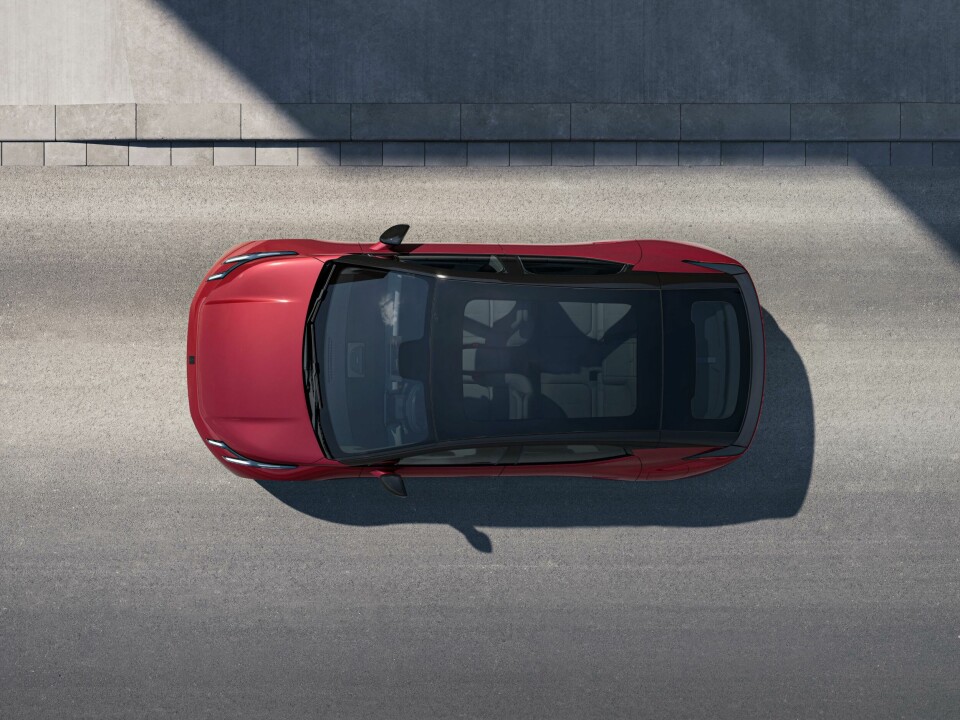
The same feeling goes for a curious feature, ostensibly a little hoop of grey material adorned with some punctuation dangling from the IP. If you pull it, the carsharing app opens up. The steering wheel is a sporty thing, gamified with pad-like buttons. All this is the antithesis of the “shy tech” we are used to hearing about from luxury brands. Lynk & Co calls its approach “proud tech”.
Indeed, the brand prides itself on its direct relationship with its customers, who are able to message the company directly with feedback and suggestions for new features. Rosen and his team have responded by incorporating some of these ideas. Most notable is the personalisation of certain sound effects, including “hey honk” which offers a friendlier alternative to the traditional car horn. “The idea is to share good vibes and send friendly messages to pedestrians,” says Eileen.
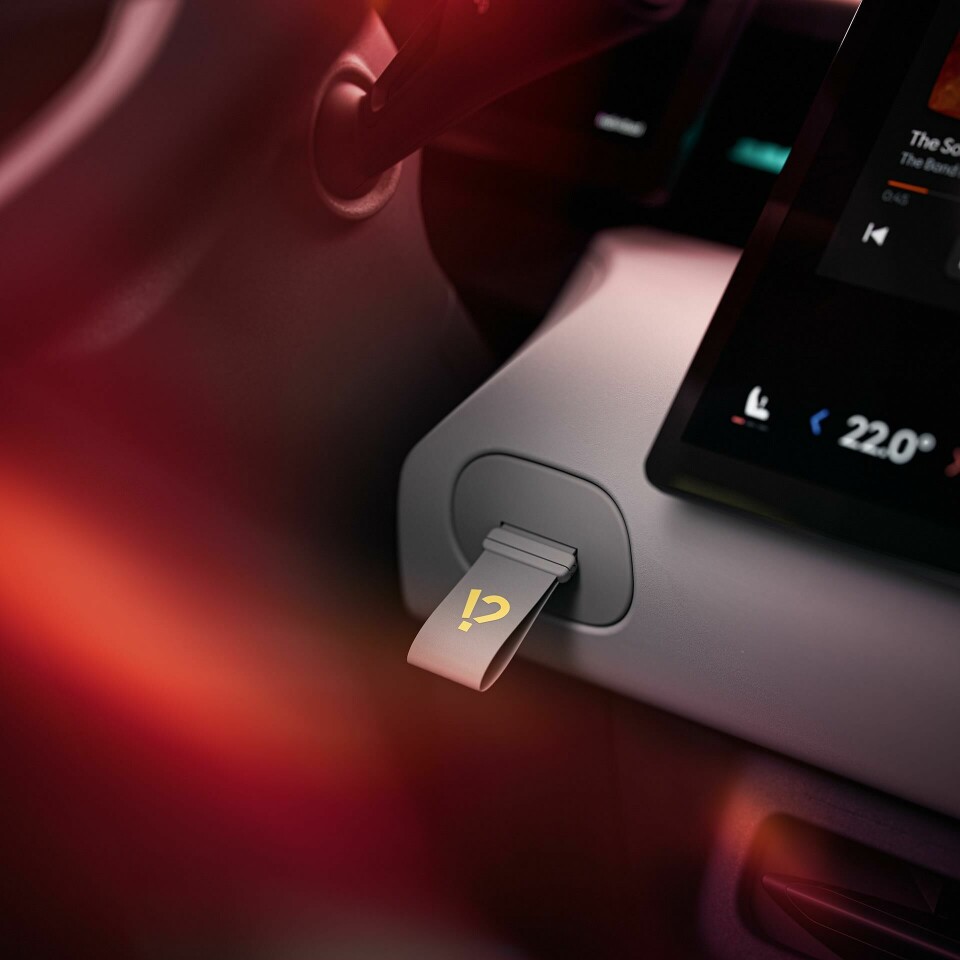
There are more analogue features too: modular storage units can be removed from the car, including a small fridge – Lynk & Co may have begun life as an urban carsharing brand but management clearly see a market for young outdoorsy types. Rosen says these ideas will be developed further on forthcoming models.
Without doubt, this is a significant model for Lynk & Co. The brand has undergone a tricky separation from its sister brand Zeekr and the hope is the 02 will further affirm its unique identity. However, Rosen is quick to point out that the brand, in terms of design, will continue to try new things.
“The most important thing is the face – we should see that family resemblance,” says Rosen. “It’s much more secondary if the car is soft, if it has a sharp line on the side, if it has a raised belt line, if we do the shark fin, the C-pillar or not. We can play with these things.” So we could see harder geometries, potentially on new Lynk & Cos? “Why not? If it’s fitting for that type of vehicle, then, yes, we will do that.”
